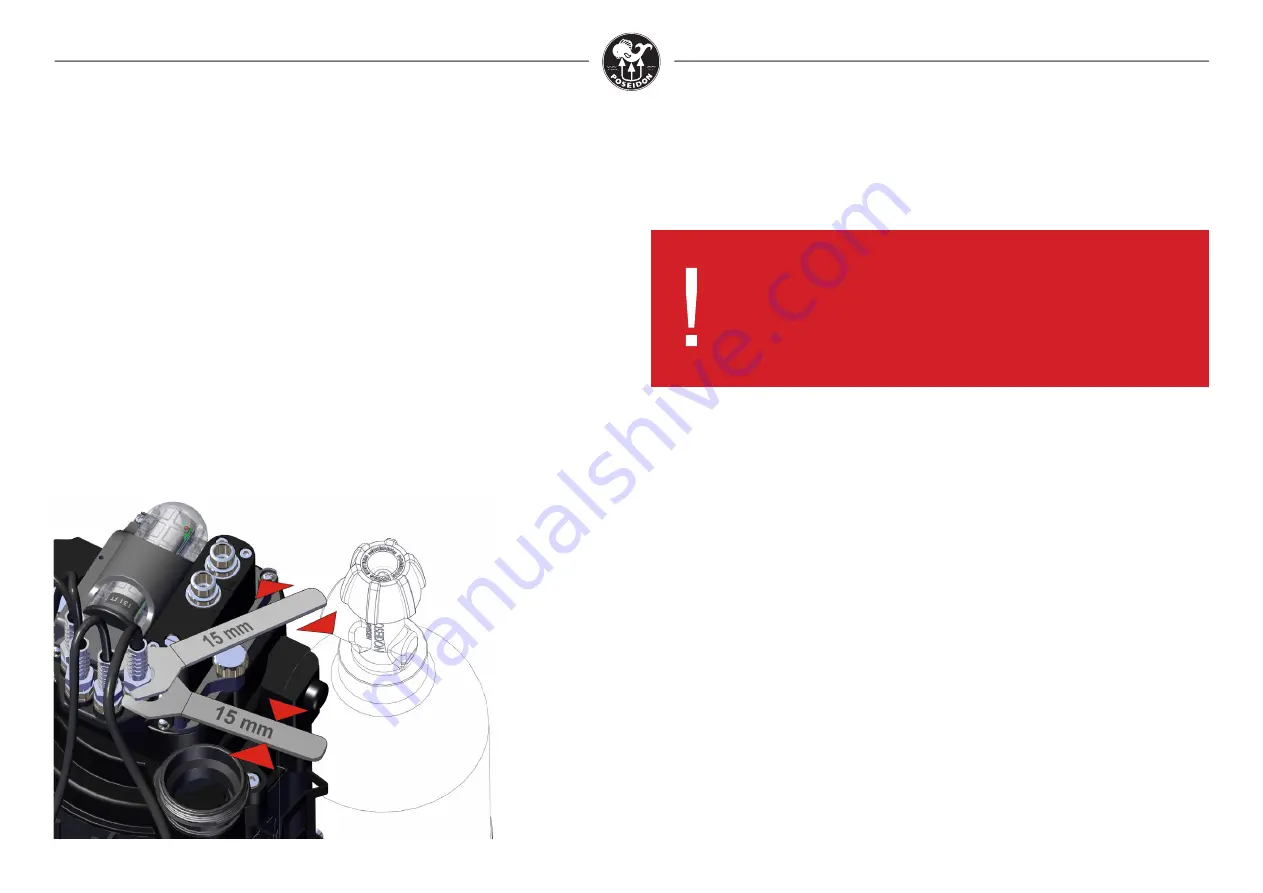
Poseidon SE7EN User Manual
Appendix 3 Page 91
Appendix 3 - SE7EN connected to M28
Pre-dive procedures
The Poseidon SE7EN is a compact and very powerful life-support system that offers an
unprecedented new experience in recreational or technical diving. But it is also a complex
assembly of high technology that includes sensors, actuators, computers, and software that
need to operate reliably in an underwater environment, for the important purpose of keeping a
diver alive and healthy. For the same reasons that good pilots use pre-flight checklists to
ensure their flying machine has a high probability of successful take-off, flight, and landing; so
does the rebreather diver need to formalize the process leading up to a dive. The SE7EN
design team has gone to extraordinary measures to automate the pre-dive procedure and the
operation of the rig during a dive. This chapter explains the pre-dive test procedures, including
manual actions that are required by the user, and how to interpret the results of the automated
tests, should any of them fail to complete successfully.
Initial Pre-dive procedures
Gas supply cylinders
Before the dive, make sure there is enough diluent (air) and oxygen to carry out the dive you
plan to do. The EU version of the Poseidon SE7EN comes with a 3-liter / 183-cubic inch
aluminum diluent (air) cylinder (with black valve knob) with a rated fill pressure of 204 bar /
2958 psi. Filled to its maximum allowed working pressure, it holds 612 liter / 21.6 cubic feet of
air. Because this cylinder is your open-circuit (OC) bailout gas in the event of an emergency,
Poseidon strongly recommends that this cylinder be full at the start of each dive. The included
oxygen cylinder (white valve knob) has the same capacity and pressure rating as the diluent
cylinder, but the recommended maximum filling pressure of oxygen is limited to 135 bar / 2000
psi for reasons of fire safety.
Attach both the diluent and oxygen cylinders using the procedures described in Chapter 1. Do
not turn the cylinders valves on initially, as this will result in wasted gas during certain portions
of the pre-dive tests. As described below, the cylinders should be turned on when the pre-dive
checks reach Test number 44 and 45. The pre-dive tests will fail if the pressure in the diluent
cylinder is less than 51 bar / 739psi, or the oxygen cylinder is less than 34 bar / 493 psi. Similarly,
if starting a dive with only a marginal amount of gas above these minimum safety limits, these
gas pressure limits will be reached soon after the start of the dive, leading to an unsatisfying
diving experience.
DANGER:
Failure to properly and completely conduct the Pre-Dive tests
and to ensure that the rig is operating correctly could lead to
permanent injury or death. Do NOT skip the Pre-Dive Procedure.
Your life depends on it.
Loosen
Tighten 3 nm
Make sure to not tighten to hard
Hold against
Make sure to not move the lower nut
> Loosen the primary display cable.
> Fit the Connecting cable between SE7EN and M28.
How to connect M28 to SE7EN rebreather with Connecting cable.

















